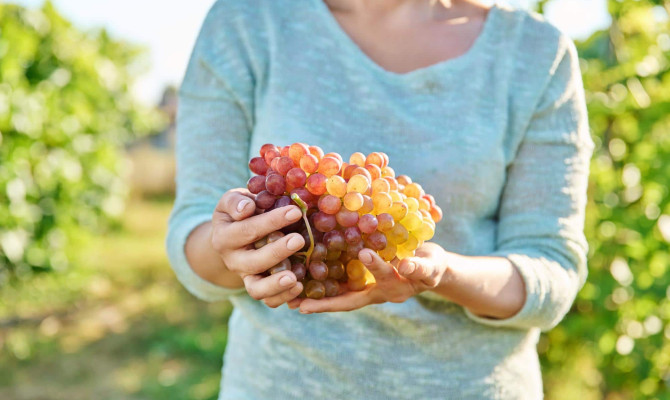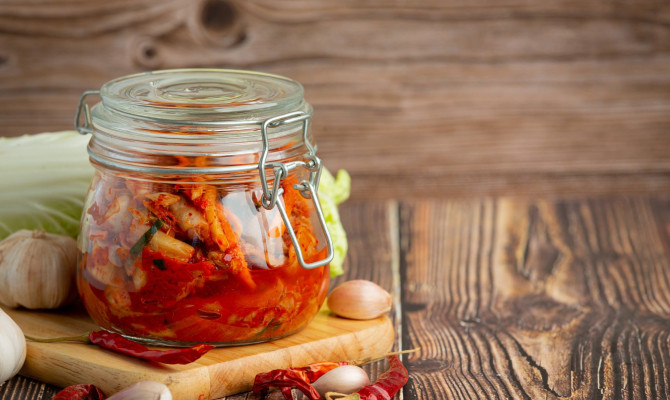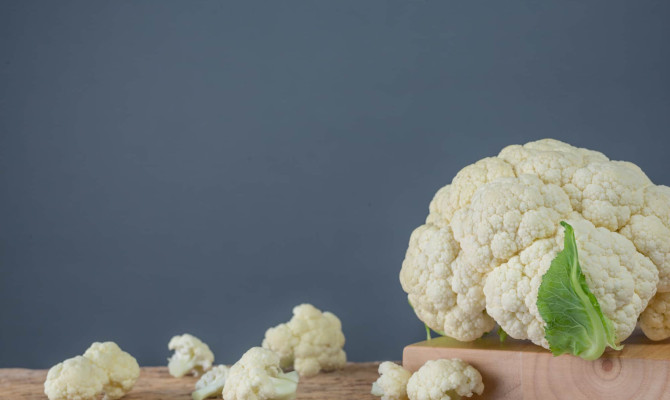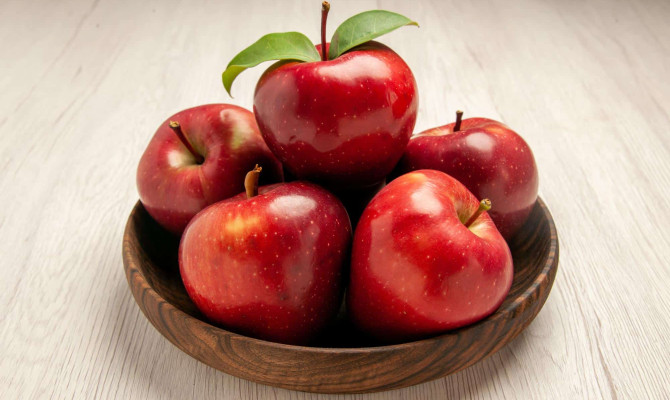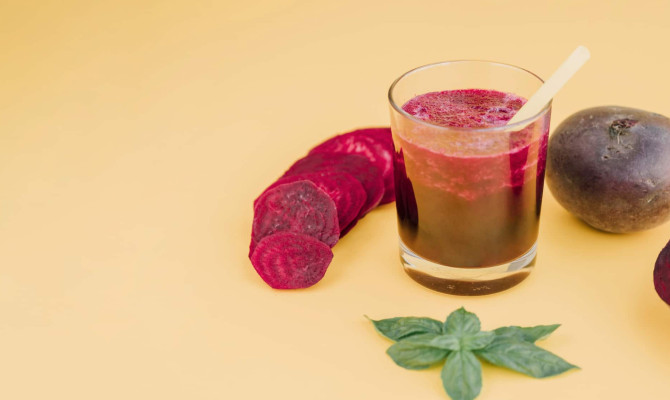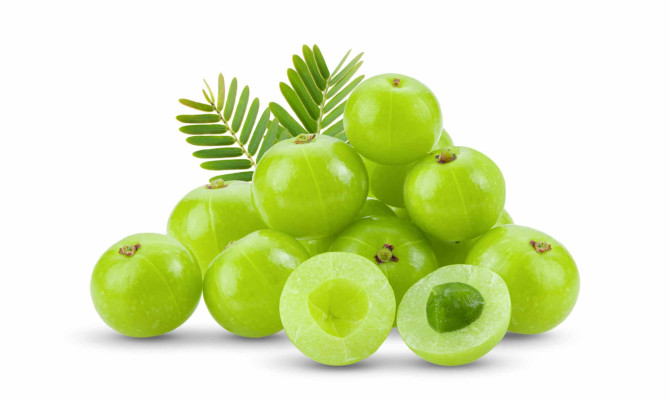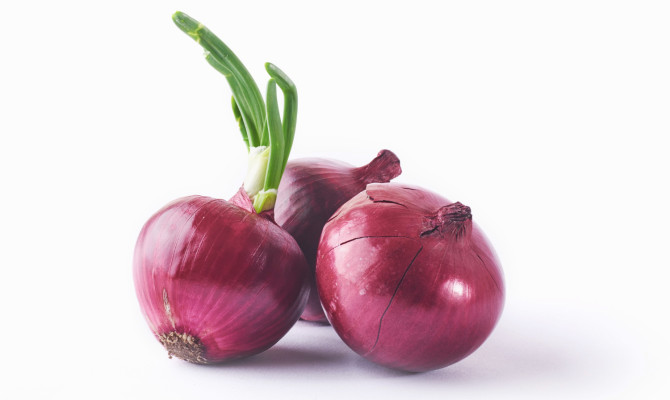Turnip vs. Radish: Differences In Nutrition & Health Benefits

- Turnips
- 17 Oct 2023
Overview
Turnip & Radish
Turnips and radishes are cruciferous root veggies from the Brassicaceae family and have a strong odor. Still, they belong to two dissimilar species: radish (Raphanus sativus) and turnip (Brassica rapa). Both veggies have many nutrients with several health benefits, such as preventing persistent diseases and cancer 1 Overview | Researched based study from National Institutes of Health . Most people frequently confuse the two veggies due to their several likenesses, but they have distinct flavors, looks, shapes, and cooking uses 2 Overview | Researched based study from National Institutes of Health . The article will analyze turnip and radish and try to clarify the fundamental differences between the two.

Differences
Differences Between Turnip & Radish
- Both turnip and radish are root vegetables, and their eatable part is the root itself. The main dissimilarity between the two lies in the flavor, shape, and look
- Radishes are globular root veggies of around 2 centimeters long with tapering ends found in several colors viz; red, white, yellow, black, and purple.
- The red variety is the most common color in supermarkets or grocery stores. However, whatever might be the variety color, all of them, when sliced, have the same white color inside.
- Radishes have a flat and even outer surface, but on the inside, they have a firm, crispy structure that diminishes once boiled. Moreover, radish has a spicy, salty flavor with a somewhat sugary taste when uncooked. On cooking, it has a moderate tangy taste.
- Conversely, turnips are larger and globular-shaped veggies with a white interior and are around 7 centimeters long. The exterior part is coarse and has a purple-white shade.
- The veggie is somewhat crispy; the cooked immature ones taste sugary, while the old, uncooked ones have a simple acidic, tangy taste. Overall, turnips have a more lenient flavor than radishes.
- Another primary difference between turnip and radish is the length of the harvesting season.
- People can harvest radishes in around 22 days, while turnips need a longer time to mature (approximately 60 days), and hence, people gather them much later than radishes 3 Differences | Researched based study from National Institutes of Health .
Taste of Turnip and Radish
- When raw, young radish has a crispy, sweet taste, while matured older radish has a slightly tangy flavor.
- Conversely, turnips have a crusty, tangy flavor. When compared, radish has a sharper taste than turnip 19 Differences | Researched based study from ScienceDirect .
Nutrition
Turnip vs. Radish: Nutrition
Both turnip and radish have quite similar nutrition. The nutrition present in 100 grams of uncooked turnip and radish are listed below in two different sections.
Nutrients in 100 grams of raw Turnip is as follows:
- Calories- 28 Kcal
- Fiber- 1.8 gram (g)
- Fat- 0 g
- Protein- 0.9 g
- Carbohydrate- 6.4 g
- Phosphorus- 2% DV (daily value)
- Calcium- 2.3% DV
- Potassium- 4% of DV
- Vitamin C- 23% of DV
- Folate- 4% of DV 4 Nutrition | Researched based study from U.S. Department of Agriculture .
Nutrients in 100 grams of uncooked Radish:
- Calories- 16
- Fiber- 1.6 gram (g)
- Fat- 0 g
- Protein- 0.7 g
- Carbohydrate- 3.4 g
- Phosphorus- 1.9% DV (daily value)
- Calcium- 2% DV
- Potassium- 5% DV
- Vitamin C- 16% DV
- Folate- 6% DV 5 Nutrition | Researched based study from U.S. Department of Agriculture .
Percentage daily value (% DV) is the amount of nutrients in the food serving that adds to the daily 2000-calorie diet.
- The carbohydrate quantity in turnip is double that of radishes. Both vegetables contain no fat but have an excellent quantity of vitamin C.
- The vegetables also contain a satisfactory amount of potassium and folate
- Vitamin C is required to boost the body’s immune response against infections and assists in cell growth and renewal in various body parts.
- The body needs folate for nucleic acid synthesis viz; deoxyribonucleic acid and correct cell working.
- Moreover, turnip and radish are rich in antioxidants such as glucosinolates, carotenoids, and tocopherol, which have numerous health advantages 6 Nutrition | Researched based study from National Institutes of Health .
Benefits
Benefits of Turnip & Radish
Both turnip and radish belong to the same Brassicaceae family and have many advantages.
Some of the similar benefits of Turnip and Radish are as follows-
- Antioxidants
- Prevents cancer
- Prevents diabetes
Antioxidants
- Both turnip and radish contain antioxidants such as vitamin C, anthocyanin, carotenoids, and flavonoids.
- The substances protect the body from the harmful compounds that cause cell injury and several ailments viz; cancer, heart issues 7 Benefits | Researched based study from National Institutes of Health .
Prevents cancer
- Glucosinolates isothiocyanates in turnip and radish prevent irregular cell growth and cancer.
- Research has indicated that nutrients in turnip and radish combat the tumor cells by diminishing their size and destroying the cells 8 Benefits | Researched based study from National Institutes of Health .
Prevents diabetes
- Both turnip and radish have sugar- regulating properties.
- Animal studies have indicated that they assist in decreasing blood sugar by increasing the insulin sensitivity and reducing the glucose absorption.
- Insulin sensitivity allows the body cells to utilize glucose efficiently.
- Besides, the similar benefits of turnip and radish, they also have some other benefits 9 Benefits | Researched based study from National Institutes of Health .
Some other Turnip benefits are listed below-
- Helps with weight loss
- Prevents pain and swelling
- Protects against bacteria
- Strengthens the bone
- Protects the liver
Helps with weight loss
- Turnips have a low glycemic index and help regulate the body’s sugar level
- Research studies have indicated that it helps maintain a fit body weight 10 Benefits | Researched based study from National Institutes of Health .
Prevents pain and swelling
- Persistent diseases are usually associated with pain and swelling
- Research has shown that nutrients (indole) in turnips inhibit compounds of the inflammatory pathway responsible for generating the body’s pain and swelling 11 Benefits | Researched based study from National Institutes of Health .
Protects against bacteria
- Glycosinolates in turnip disintegrate compounds viz; isothiocyanates that can stop microbial growth.
- Research has shown that isothiocyanates can combat harmful bacteria viz; S. aureus and E. coli 12 Benefits | Researched based study from National Institutes of Health .
Strengthens the bone
- Nutrients (glycosinolates) in turnip might prevent the loss of bone mineral density.
- It also prevents osteoporosis (bone disease) 13 Benefits | Researched based study from National Institutes of Health .
Protects the liver
- Turnips have sulfur compounds and anthocyanins that are advantageous for the liver.
- Animal studies have shown to have improved effects in rats with liver issues 14 Benefits | Researched based study from National Institutes of Health .
Some other benefits of Radish are listed below-
- Protects against fungal infection
- Enhances digestive health
Protects against fungal infection
- Radish has RsAFP2 (Raphanus sativus antifungal peptide 2) protein with antifungal properties.
- Research studies have indicated that it can prevent fungus growth, Candida albicans.
- Candida albicans causes oral and vaginal infections in humans 15 Benefits | Researched based study from National Institutes of Health .
Enhances digestive health
- Fibers in radish improves the stool bulk and helps in easy bowel movement
- It also decreases the symptoms of constipation
- Animal studies have also indicated that leaf extract of radish inhibits gastric sores by covering the gastric lining 16 Benefits | Researched based study from National Institutes of Health .
Tips
Tips to include Turnip & Radish in the Diet
People use turnips and radishes differently in kitchens. Most individuals like turnips in cooked form while radishes in their raw form in salads.
Tips to include Turnip in diet
- Slice carrot and turnip and bake with olive oil and garlic and relish as a side dish
- Mix boiled turnips with pepper and salt with yogurt to enhance the taste.
- Make turnip fried rice with carrots, peas, beans, and scrambled eggs to make it more nutritious and delicious.
- Take longitudinal slices of turnips, mix them with salt pepper, and deep fry them in olive oil to enjoy as a snack.
Tips to include Radish as salads in the diet
- Mix thin slices of radish and grapes with chives, pepper, salt, olive oil, apple cider vinegar, and relish the taste.
- Mix sliced radish green apple with lemon juice, celery, honey, and olive oil and enjoy as a snack anytime.
- Add chopped radish, onions, and cucumbers, and mix them with pepper, salt, and lemon juice to taste great.
- Add chopped radishes and some boiled sweet corn with pepper, salt, and olive oil to make it more nutritious.
Moreover, one can also enjoy radish in pickled form in sandwiches and rice meals 17 Tips | Researched based study from ScienceDirect .
Risks
Risks of Turnip & Radish
Both veggies are pretty safe for most people, but some individuals with Brassicaceae family sensitivity might encounter unfavorable effects with the following symptoms-
- Skin irritation (on direct touch with radish peel)
- Itchiness
- Hives
- Skin reddening
- Swelling in mouth, face, and lips
- Shortness of breath 18 Risks | Researched based study from National Institutes of Health .
FAQs
Frequently Asked Questions About Turnip & Radish
Q. Are Turnips and Radishes belong to the same family?
- Turnip and radish are from different leafy vegetable species: turnip (Brassica rapa) and radish (Rhaphanus sativus).
- They both have a sharp odor and are from the same Brassicaceae family.
Q. Can you substitute Radish for Turnip?
- Yes, one can alternate radish for turnip or vice versa, as both possess a similar tangy flavor.
- However, radishes have a more robust flavor than turnips, so if one alternates radish for turnips, one must put additional sweeteners to balance the sharpness.
Q. Do raw Turnips taste like Radishes?
- The way one eats turnips might impact the taste. Uncooked turnips taste similar to radishes, with a tangy, crude taste.
- Conversely, cooked turnips taste sweet and less spicy. However, radish might also taste somewhat sweet but has more spiciness.
Q. Which is healthier -Turnips or Radishes?
- Both turnips and radishes have similar nutrition and, hence, both are healthy. They both possess excellent quantities of vitamin C and a considerable amount of folate and potassium needed to maintain a fit body.
- However, in the context of carbohydrates, turnips contain double the amount of radishes 17 FAQs| Researched based study from ScienceDirect .
Takeaway
Turnip & Radish: Nutritious Veggies with Antioxidant Properties
Turnip and radish are both root veggies with analogous nutrition and health advantages. Research studies continue on these veggies because of their potent capacity to prevent tumor growth and persistent ailments. The only thing that separates the two veggies is the flavor, look, shape, and their kitchen uses. People usually enjoy turnip in its cooked form, while radish is more prevalent in its salad form. Overall, both veggies are nutritious with several antioxidants and can be a great addition to a well-balanced diet.
Any feedback on this article?
 This Articles content was accurate
This Articles content was accurate Very Informative Article
Very Informative Article I have a question or a comment
I have a question or a comment
 This article contains inaccurate content
This article contains inaccurate content This article was not helpful
This article was not helpful I have a question or a comment
I have a question or a comment
We appreciate your helpful feedback!
Checkout our social pages
References
-
National Institutes of Health
Overview
-
National Institutes of Health
Overview
-
National Institutes of Health
Differences
-
U.S. Department of Agriculture
Nutrition
-
U.S. Department of Agriculture
Nutrition
-
National Institutes of Health
Nutrition
-
National Institutes of Health
Benefits
-
National Institutes of Health
Benefits
-
National Institutes of Health
Benefits
-
National Institutes of Health
Benefits
-
National Institutes of Health
Benefits
-
National Institutes of Health
Benefits
-
National Institutes of Health
Benefits
-
National Institutes of Health
Benefits
-
National Institutes of Health
Benefits
-
National Institutes of Health
Benefits
-
ScienceDirect
Tips | FAQs
-
National Institutes of Health
Risks
-
ScienceDirect
Differences












